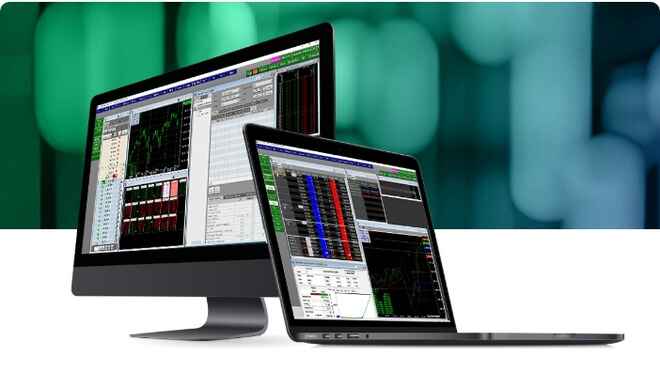What Are Soybean Futures?
Soybean futures are an exchange traded and regulated futures contract in which the buyer agrees to take a delivery on a pre-determined amount of soybeans for a pre-determined price on a pre-determined date. Soybean futures are traded on the Chicago Board of Trade and are a useful tool that provide traders with exceptional liquidity and hedging possibilities.
How Are Soybean Futures Used? (How Do I Trade Soybean Futures?)
Soybean Basics
Soybeans and in turn, soybean futures contracts are used in a variety of manners that are crucial to all reaches of the globe. Soybeans themselves are used in everything from livestock feed, to meat substitutes, and for soybean oil. As the global demand for soybeans increases, we are seeing the price for soybean futures contracts increase. Because of this, soybean futures have become an increasingly popular commodity as they offer an extremely liquid way to trade futures and are often used as a day-trading tool.
Soybean Futures Contract Specs
In order to trade soybean futures, one must learn the soybean future contract specifications. A standard soybean futures contract is for 5,000 bushels of soybeans, with the mini-soybean contract being worth 1,000 bushels. The tick size for soybean futures is $12.50 and the initial margin is $4,725. That means you are controlling 5,000 bushels of soybeans for as little as $4,725 which affords you a ton of leverage which makes soybean futures a highly lucrative contract.
Factors Impacting Soybean Futures
Soybean futures follow a strict cycle of planting, podding, and harvesting every year. While this portion and schedule for soybeans is predictable, the outside factors impacting soybean growth, harvest, and demand are not.
One of the largest factors that impacts soybean futures is unsurprisingly planting. Planting occurs in the months of March and May and give a good prediction of what that year’s supply will look like. The USDA will publish a planting-expectations report every year and if the actual planting numbers meet the expected number in that report, the price of soybean futures will usually increase. However, if the actual planting numbers are lower than the expected numbers, it may drive prices lower.
The next factor is podding. Podding is when the soybean seeds start to sprout, and this usually happens sometime in August. Podding gives a more accurate prediction of what the final crop will be as not every seed planted will pod. A strong or poor podding number will impact underlying futures prices.
Another factor the greatly impacts soybean futures prices is harvest. Harvesting usually occurs in October or November and the number of bushels harvested will impact the price of soybean futures depending on how many bushels are accounted for. Delays in harvesting, diseased crops, and smaller yields can all impact price.
The last and possibly most important factor the impacts the price of soybean futures is global demand. Almost 50% of all global soybean imports come from China, making them the biggest factor impacting global soybean demand.
To help fully understand the movement and seasonality of soybean futures it is important to follow the various reports the are published year-round. We recommend taking a look at the Grain Stocks Reports, USDA Reports, and WASDE Reports to start. Those reports will show soybean futures quotes and forecasts for the year to help you get a better idea of the condition of the marketplace.
How Do You Read Soybean Futures Prices?
In order to read the price of soybean futures, you must first find the price quote on a chart. RJO futures has a great customizable quotes feature on our website you can use to start looking at different charts. At the time of this writing, that chart shows that soybeans are trading at 1279, which means they are valued at $12.79/bushel, but that is not the total value of the contract. The total value of the contract would be$12.79 x 5,000 (5,000 bushels per contract) for a value of $63,950. It is important to note, that just a quarter cent movement in the per bushel price equals a $12.50 move in the value of the contract. This is known as the tick size.
When Do Soybean Futures Trade?
Soybean futures trade Sunday-Friday from 7:00 p.m. – 7:45 a.m. CT and Monday-Friday 8:30 a.m. – 1:20 p.m. CT. It is important to note that unlike other futures contracts, soybean futures contracts do not have expiration every month. Soybean futures trade for delivery or expiration during the months of January, March, May, July, August, September, and November. The last trade date is the 15th of the month of expiration. For example, if you wanted to buy a November soybean contract the last day you could purchase that contract would be November 15th. Soybean futures can be purchased for delivery unlike some other futures contracts.
How Many Soybeans are in a Soybean Futures Contract?
Soybean futures contracts are bought and sold at a value of 5,000 bushels per contract. So, the total dollar value of the contract is the price per bushel multiplied by 5,000. For smaller traders, the CME also offers a mini soybean futures contract that is 1/5th the size of a full contract. A mini contract accounts for 1,000 bushels of soybeans.
How Much Does a Soybean Futures Contract Cost?
A soybean futures contract’s price changes by the minute based on a variety of factors. As it stands right now, soybeans are trading at $12.82/bushel. So that means a soybean futures contract cost would be $64,100 dollars. However, you are not responsible for that amount of money up front. You are only responsible for the initial margin which is $4,725. This leverage is partially what makes soybean futures contracts so lucrative, you are controlling $64,000 worth of soybeans for a hair under $5,000.
What is the Daily Limit on Soybean Futures?
In futures, the daily limit refers to maximum price range allowed in each trading session. If the price fluctuates more than the daily limit allows trading may be halted until the limit can be expanded. The daily limit on soybean futures is $1.00/bushel. This limit was expanded in Spring of 2021 from $.70/bushel.



